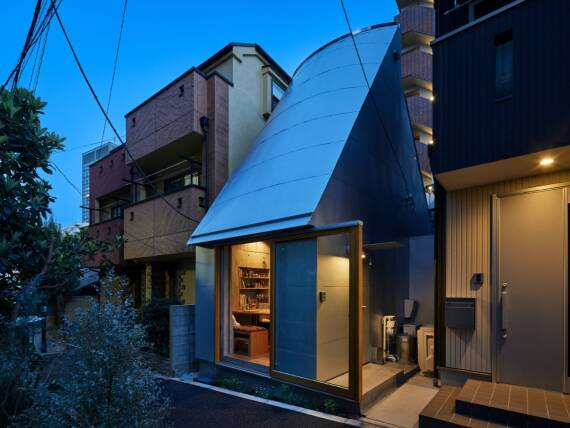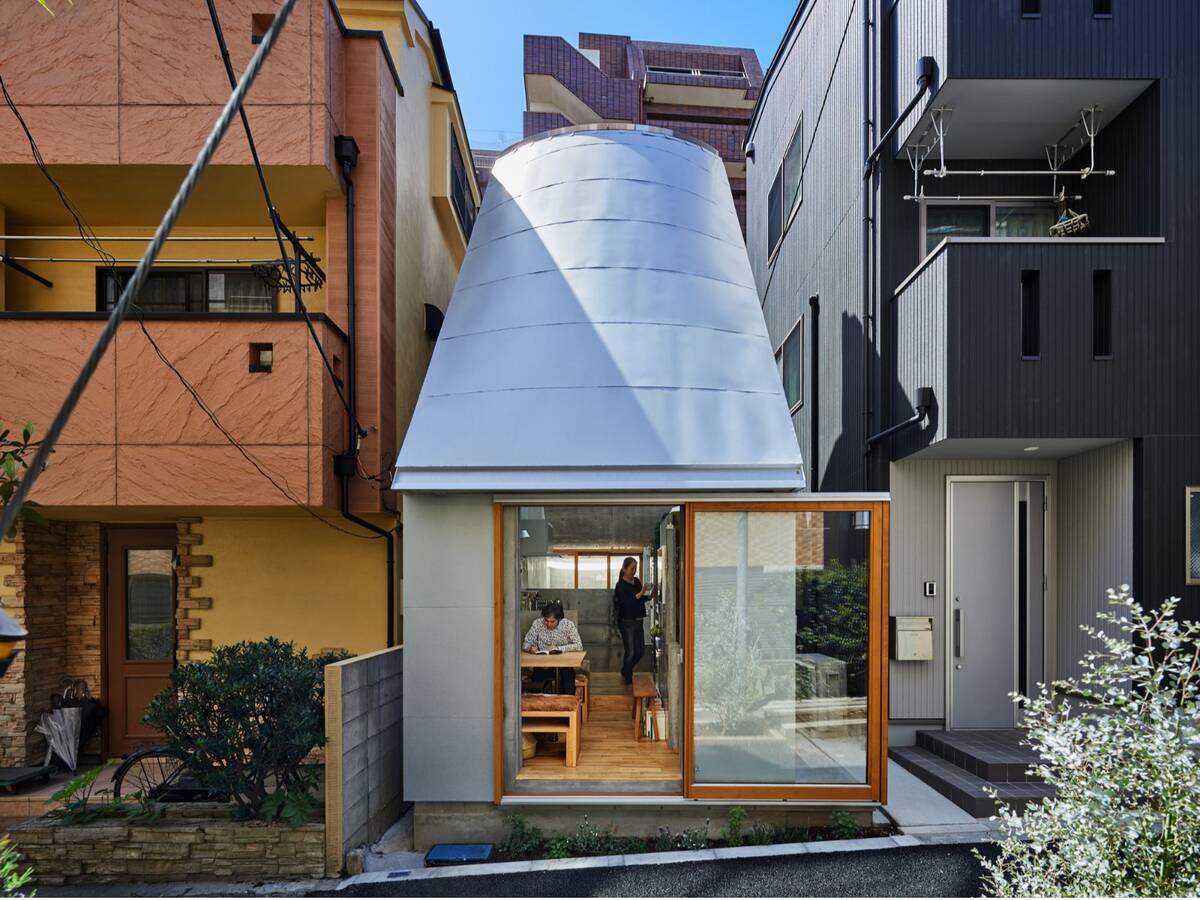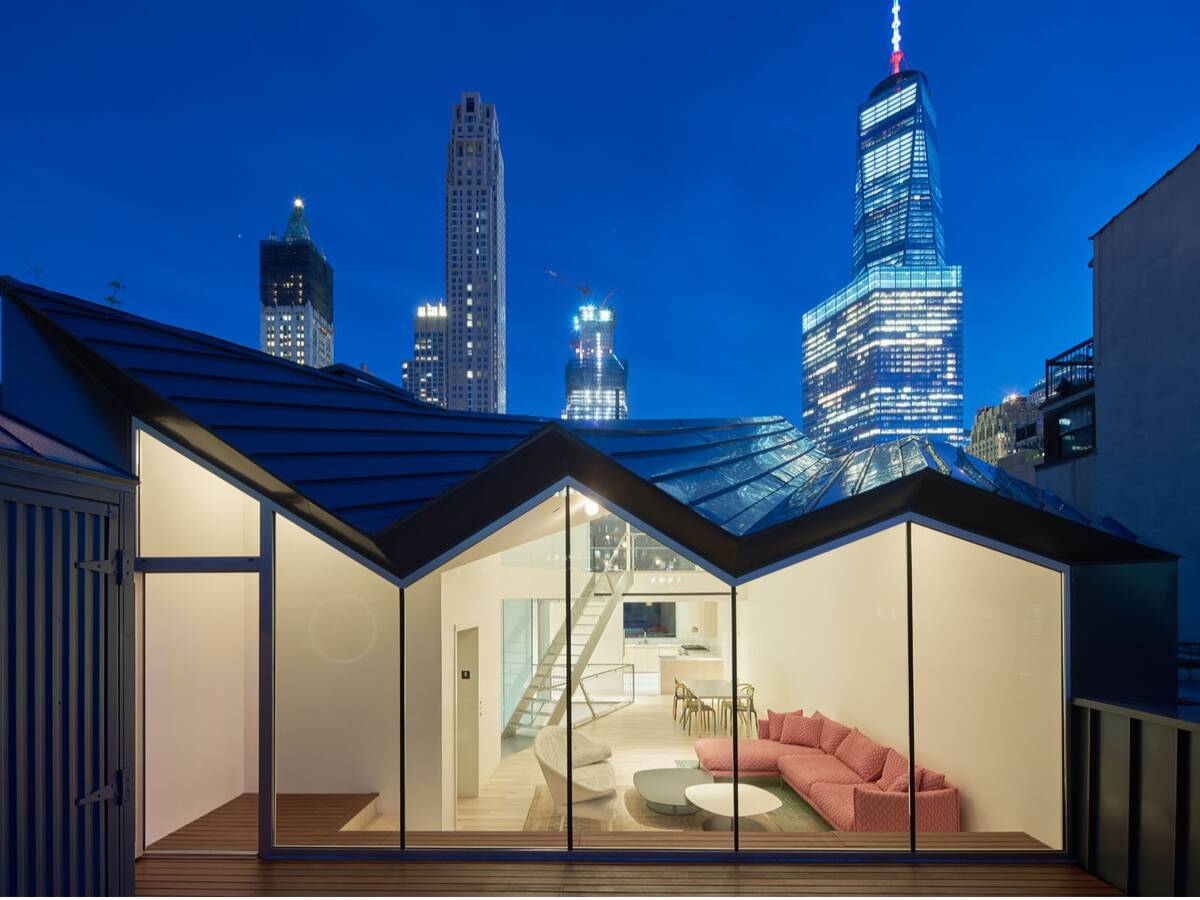
The AXOR interview
Takeshi Hosaka: The Love2 House
Acclaimed architect Takeshi Hosaka, a professor at Tokyo’s prestigious Waseda University, has developed a reputation for home designs that are both inventive in their use of space and highly attuned to the personal needs of their inhabitants. The architect speaks with AXOR about his personal interest in Compact Luxury, as reflected in Love2 House, the 18m2 micro-home in Tokyo where he and his wife reside.

Changing urban landscapes
AXOR: From your point of view as an architect, what is the future of urban living—or, if you prefer, what trends in urban living are you seeing?
TAKESHI HOSAKA: There are two types of urban settings, historical cities such as those often found in the EU, and rapidly evolving cities such as those one finds in Asia. Urban living in historical cities changes little and slowly because the cities themselves have been in the same form for a long time. However, for the other type of urban environment, I cannot imagine what living there will be in the future. These cities have a huge artificial power and technology to change the way people live. I only hope that people will realize how important it is to preserve natural environments and a connection with nature.Understanding the client’s needs
AXOR: What have you learned from your urban clients about their evolving needs?
TH: I have learned that every person, and therefore every client, has many different priorities in his or her life—living with animals, for example, or living with nature, or pursuing certain hobbies, etc. These priorities change from client to client, and even a single client may have many diverse needs. But for the clients to love the house, the house itself must meet and reflect all of these needs.Luxury is personal
AXOR: What does luxury mean in the context of urban living, now and going forward?
TH: When I hear the word “luxury”, I imagine a luxury hotel with a beautiful view, a big terrace area, an extremely comfortable bed, etc. These are all extraordinary reference points when compared with those of an ordinary urban life. Therefore, to bring “luxury” into a client’s ordinary life, it is important to identify and incorporate those things that the client truly desires. For instance, for the Love2 house I created an outside bath and shower made with high-quality materials. It is a small thing, but it was important to me, and in that way it has something in common with the luxuries found in those hotels.

Feeling love for the project
AXOR: What can architects do in order not just to optimize space in urban homes but to enhance it—to give it meaning, character and even soul?
TH: To give a space character and soul, architects need to get their clients to feel love for the project. To get the clients’ love, I would first of all build a frame on the land. After fixing the frame, I would start thinking of how to make a path for light, wind, people, etc., by imagining how my client will live in—and love—the house. For the Love2 house, I needed three different attempts to fix the frame in the right way, and the plan changed even though the construction was already underway.
Compact Luxury inspirations
AXOR: At the project level, how are urban-living trends reflected in briefings such as those for the Love2 House?
TH: It’s not the trend now, but in Japan’s Edo period, from 1603 to 1868, it was thought appropriate for one family of three or four people to live in a single-story ‘apartment’ home of approximately 9.72m2. The plan for the Love2 house originally included a second floor, for a total area of 36m2, but the client, my wife, who had been reading a book about the Edo period, said to me, “18m2 is quite big enough for two of us!” Then I shifted to designing a single story house of 18.84m2. As examples, the following houses are also smaller than 20m2: Hojoki, written by Kamo no Chomei (1155-1216), is that chronicle of life in a hut of 9.18m2. Le Corbusier’s Cabanon is 16.85m2. In my analysis, these two owners very much loved life in their houses and the surrounding environment.
A house for all seasons
AXOR: In the case of the Love2 House, what particular challenges did it present? And how did you respond to those challenges?
TH: The site of the Love2 house is very warm during summer but doesn’t get much sunlight from November to February. Because of this, I was not sure how nice it would be to live there in the wintertime. Then I remembered the time that I visited Finland during the winter. Scandinavia doesn’t even get as much sunlight as the site of Love2 house, so I changed my thinking. Maybe the Love2 house could enjoy tropical weather in summer and Scandinavian weather in winter. This concept led me to sketch two curved roofs tops that open to the sky. In the winter, the two skylights effectively allow soft sunlight into the house. In the summer, the house is filled with brilliant sunshine like that of a tropical country. We can feel sunlight from of all over the world throughout the year. The roof is composed of two HP shells. They are merged at different heights and create a simple house shape.
Building on ancient principles
AXOR: In your opinion, how does the Love2 House reflect the trend towards Compact Luxury?
TH: I once read a book about life in ancient Rome. It said there were five components of living that the Romans thought the ideal villa should incorporate. These were study, bathing, drama, music and epicureanism. I decided to incorporate the same five components into this small house of 18.84m2. I brought a large refrigerator, and we eat rice in a boiled earthen pot. I created an outside bath. I created a wall bookshelf that can store 300 of our most favored books. We also have 300 vinyl records, and I built a nice concrete wall that echoes the music. In addition, we rely on the Bible when we get tired, as Kamo no Chomei mentioned in Hojoan that religion is one of the key components in one’s life.A connection to the community
AXOR: What is it like to reside in a so-called ‘tiny house’?
TH: Though it has only 18m2, it packs in quite a lot of contents. The ceiling window offers constant change—the colour of sky, how the sunlight appears, the type of clouds. I take pleasure from feeling the amount of nature this house offers. The house has a glass wall (window) facing the path in Front. The Front street has a flower bed so we enjoy it as our garden. I wasn’t sure if we could protect our privacy with such a large window to the street, but to tell the truth, it was an excellent idea. It facilitated communication with neighbors as we settled down into their community. When we keep it fully open, people who walk by on the street feel free to talk to us. They’re like long-time friends. And children put their hands on the floor and look inside. We even pat strolling dogs from the dining area. In this house we feel the town is very close. We are really surprised by how pleasant it is!
AXOR: What did you learn from designing a tiny house for yourself, and how has it effected your work for clients?
TH: The designing of this tiny house has taught me how important it is to have challenges and be conFronted with limitations. After designing this house, I started to enjoy the new possibilities that come from facing such challenges.
A personal idea of luxury
AXOR: What is luxury for you? How do you define it on your own terms these days?
TH: Luxury for me is feeling natural elements such as the wind, sunlight, people. In the Love2 house, I can enjoy nature even during bath time. When it’s raining, for example, I can soak and listen to the sound of the rain.
AXOR: Has your idea of luxury evolved, and if so, how and why?
TH: I have found that, while large houses are nice, luxury does not depend on the amount of land or the square meters of floorspace. It depends on how the home meets the client’s needs and reflects his or her priorities.
Trusted partners


